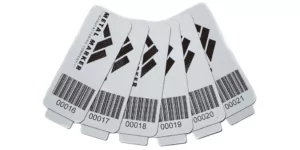Have you ever wondered about those mysterious black and white bars found on almost every product you come across? Those are UPC codes, and they hold a wealth of information about the items we purchase daily.
In fact, every single item you purchase has a special code attached to it called a UPC code. In this blog, we’ll explore the answers to:
What are UPC codes?
How do they work?
Why do they play a crucial role in retail, inventory management, and the overall functioning of modern commerce?
Whether you’re a curious consumer or an aspiring entrepreneur, get ready to unlock the secrets behind these ubiquitous codes and gain a deeper understanding of their significance in our interconnected marketplace.
The Basics: What Are UPC Codes?
The letters UPC stand for Universal Product Code, which was first created to help small grocery stores speed up their checkout process for customers. These codes also made it easier for stores to track their inventory and thanks to its success. For this reason, UPC codes quickly spread to other items besides food.
The Uniform Code Council started integrating UPC codes and allowed manufacturers to apply in order to have their codes entered into the UPC system. Each manufacturer would pay an annual fee and the Uniform Code Council would issue a six-digit manufacturer identification number. Today, the UPC code is 12-digit long and has two main parts.
The first part of the code is the machine-readable barcode. The second part is the human-readable 12-digit UPC number. These barcodes are graded on an A-F scale.
Breaking Down UPC Codes
So, what is UPC and how does it apply to today’s goods and products? The first six digits of a UPC number is the manufacturer identification number, and the next five digits are the item number. These numbers are assigned to products by a coordinator to ensure that no two numbers are the same.

Every single item a manufacturer sells as well as every size of that item must have a different, unique UPC code assigned to it. For example, a 2-liter bottle of Pepsi will have a different code than a 12-ounce bottle of the same name brand.
Finally, the last digit in a UPC code is called a check digit, and this is how a scanner knows if the item is read correctly. Even though items can be scanned with a bar code, the code is what determines the price and product. Some barcodes may be affixed to products with decals and labels, while others are printed directly onto the packaging itself.
While the concept of the Universal Product Code isn’t new, it’s still a standard part of manufacturing and consumerism. These codes allow companies to track their products from the assembly line to the delivery truck, into the stores, and onto your shelves. In addition, utilizing this AIDC technology allows for less human error.
Cracking the (UPC) Code
Made possible by industrial barcode label printers, barcodes play a large role in everything we buy. It’s easy to see why these unique numeric codes are so important. With a UPC code, all products can be properly tracked and priced accordingly.
If you need UPC codes, you need to partner with a company that has an industrial barcode label printer. You’re looking for Metal Markers Manufacturing Company. We offer a wide selection of high-quality barcode tags, labels, and more. Contact us today for more information.